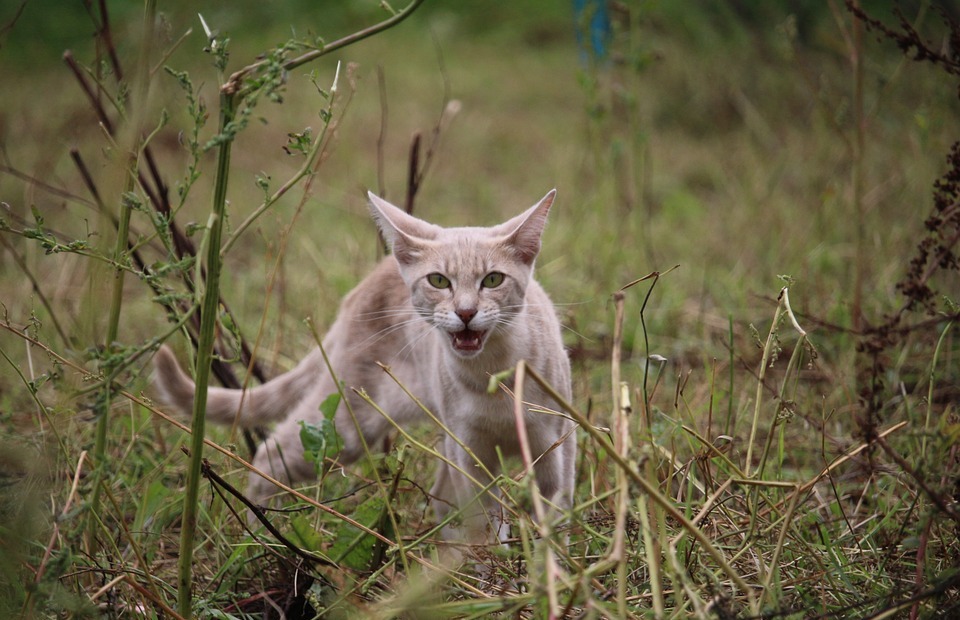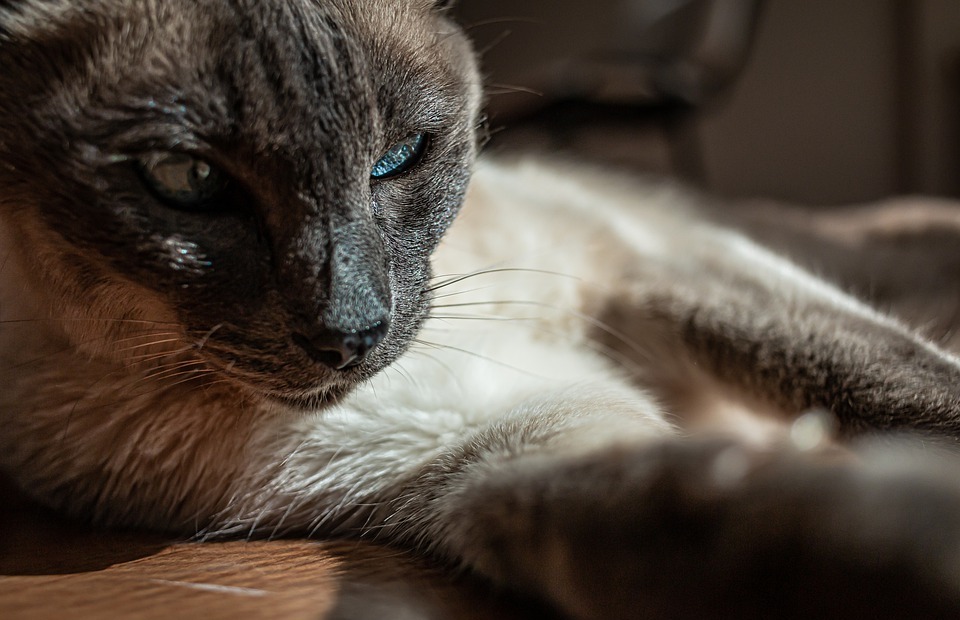This article delves into the fascinating world of feline communication, exploring the various reasons why cats meow and the nuances of their vocalizations. We'll unravel the mysteries behind their meows, uncovering the different meanings, contexts, and evolution of this unique form of communication.
Part 1: The Enigmatic Meow

1.1. A Symphony of Sounds: The Variety of Meows
Cats possess a surprisingly varied vocal repertoire, with different types of meows conveying distinct messages. From the gentle "purr-meow" of contentment to the urgent "chirp" seeking attention, each sound holds a unique meaning.
- The Classic Meow: The most common and recognizable meow, used for general communication, often signifying a request for food, attention, or playtime. This meow is typically a mid-pitched sound, lasting around 1-2 seconds.
- The Chirp: A short, high-pitched meow often used to express excitement or interest, particularly when observing birds or other small prey. This sound is often described as a "tweet" or "chirp" and is usually accompanied by a flicked tail and wide eyes.
- The Purr-Meow: A soft, melodious meow often associated with contentment, affection, and relaxation. This meow is often combined with a gentle purr and can be used as a greeting or a sign of affection.
- The Growl: A guttural sound used to express displeasure, warning, or aggression. This sound is often accompanied by flattened ears, a raised tail, and dilated pupils. It is a clear signal that the cat is feeling threatened or uncomfortable.
- The Hiss: A sharp, exhaled sound used as a threat display, indicating fear or aggression. A hiss is often accompanied by a raised back, arched tail, and flared nostrils. It is a warning to stay away or back off.
- The Yowl: A long, drawn-out meow often used to communicate distress or pain. It is a more intense sound than a regular meow and can be accompanied by other behaviours such as pacing, hiding, or licking wounds.
1.2. Beyond the Meow: Other Forms of Communication
While meows are a primary form of feline communication, they are not the only way cats express themselves. Other forms of communication include:
- Body Language: Tail position, ear movement, and facial expressions all convey important messages about a cat's mood and intentions. A twitching tail can indicate excitement, while a puffed-up tail can signal aggression. Flattened ears can mean fear or aggression, while dilated pupils can indicate arousal or fear.
- Scent Marking: Cats use urine and pheromones to mark their territory and communicate with other cats. Urine spraying is often used to mark boundaries, while rubbing against objects deposits scent that allows other cats to identify them.
- Rubbing: Cats rub their heads and bodies against objects and people to deposit their scent and establish their presence. This behaviour is a sign of affection and trust, as well as a way to mark territory.
- Vocalizations: Beyond meows, cats use a variety of vocalizations like purring, chirping, and trilling to convey emotions. Purring can indicate contentment or even pain relief. A trill can be a greeting or a sign of excitement.
Part 2: The Evolutionary Origins of the Meow

2.1. A Call to the Mother: The Meow's Ancient Roots
The meow's origins lie in the distant past, tracing back to the ancestral relationship between cats and humans. Early domestication likely led to kittens developing meows to communicate with their mothers, seeking nourishment and protection.
2.2. The Meow's Evolutionary Function: A Theory
It's believed that the meow's high-pitched frequency evolved to mimic the sound of a kitten's cry, triggering a maternal response in the mother cat. This would have ensured that kittens received the care they needed for survival.
2.3. A Communication Bridge: The Role of Human Selection
Over centuries, humans have unconsciously selected for cats that exhibit more frequent and varied meows. This selection pressure may have strengthened the bond between cats and humans, enhancing their ability to communicate with each other.
2.4. The Meow: A Unique Adaptation for Human Interaction
The meow is a remarkable adaptation, specifically developed for communication with humans. While cats communicate with each other through a diverse range of vocalizations and body language, the meow is almost exclusively reserved for human interaction.
Part 3: The Language of Meows: Deciphering Feline Messages

3.1. The "Hungry Meow": A Universal Request
The classic meow often signals a simple request for food. Cats, with their highly sensitive senses of smell, are quick to recognise mealtimes and will use their meows to remind their humans of their needs. This meow is often accompanied by a specific behaviour, such as rubbing against the owner's legs, sitting by the food bowl, or staring intently at the fridge.
3.2. The "Attention Meow": Seeking Interaction
Cats often meow to demand attention from their human companions. They may seek play, affection, or simply a moment of interaction. The frequency and intensity of the meows can reflect the urgency of their desire for attention. A gentle meow might be a simple "hello," while a more insistent meow could be a plea for playtime or a scratch behind the ears.
3.3. The "I'm Uncomfortable Meow": Expressing Discomfort
Cats may meow when they feel unwell, injured, or stressed. The sound of a meow can signal pain or discomfort, prompting their human companions to investigate and offer assistance. This meow is often accompanied by other behaviours, such as hiding, pacing, licking wounds, or refusing food.
3.4. The "I'm Bored Meow": Encouraging Playtime
When cats are feeling bored or restless, they may resort to meows to encourage their humans to engage in playtime. They may rub against their legs, bat at toys, or simply meow persistently until their demands are met. This meow is often accompanied by a playful attitude, such as batting at objects, chasing shadows, or jumping around.
3.5. The "I'm Frustrated Meow": Expressing Dissatisfaction
Cats may meow out of frustration if they cannot access something they want, such as a closed door or a locked window. This meow is often accompanied by behaviours such as scratching, pawing at the object, or pacing.
Part 4: The Mystery of the Kitten Meow
4.1. The Kitten's "Chirp": A Communication Bridge
Kitten meows often sound higher-pitched and more frequent than those of adult cats. This is because kittens use their meows to communicate with their mothers, seeking nourishment, warmth, and protection. This chirp is a universal signal of need in kittens, prompting their mothers to respond with food, grooming, or cuddles.
4.2. The Kitten's "Trill": A Form of Social Interaction
Kittens often use a trilling sound, a high-pitched chirping, as a form of social interaction. This sound can be interpreted as a request for play or attention, and is frequently used when engaging with their littermates or humans. This trill is a playful sound that signifies a desire for interaction and is often used in the context of play or exploration.
4.3. Learning to Meow: The Development of Communication
As kittens grow, their meows evolve and become more nuanced, reflecting their developing understanding of human interaction and social cues. They learn to adapt their meows to specific situations and individuals, enhancing their ability to communicate effectively. Kittens gradually learn to associate different meows with specific responses from their humans, such as getting fed, being petted, or playing.
Part 5: Beyond the Meow: The Importance of Understanding Feline Communication
5.1. Building a Stronger Bond: Understanding Your Cat's Language
Understanding your cat's meows and other communication methods is crucial for building a strong and harmonious relationship. By paying attention to their vocalizations, body language, and behaviour, you can better understand their needs and emotions. This understanding can help you respond appropriately to your cat's requests, alleviate their anxieties, and strengthen your bond.
5.2. Identifying Issues: Early Warning Signs of Illness
A change in a cat's vocalizations can be a sign of underlying health issues. Increased meowing, vocalization without reason, or a change in the tone or frequency of meows can indicate pain, discomfort, or illness. If you notice a sudden change in your cat's meowing habits, it's important to consult with a veterinarian to rule out any medical issues.
5.3. Promoting Healthy Communication: Encouraging Open Dialogue
Providing your cat with a safe and stimulating environment, engaging in regular play and interaction, and responding to their needs in a timely manner can foster healthy communication and strengthen your bond. This can involve providing them with plenty of toys, scratching posts, and opportunities for exploration, as well as offering them affection and attention when they are seeking it.
Part 6: FAQs
6.1. Do all cats meow?
While most cats meow, some breeds, such as Siamese cats, are known for being more vocal than others. Individual cats also vary in their vocal habits, with some being more talkative than others. This is likely due to a combination of genetic factors, personality traits, and environmental influences.
6.2. Can cats understand human language?
While cats cannot understand human language in the same way humans understand each other, they can learn to associate specific words and phrases with actions, such as their name, mealtime, or playtime. This is because cats are highly intelligent and capable of learning through association.
6.3. Why do cats meow at me when I'm eating?
Cats often meow at their humans when they are eating because they associate the sound of food with mealtimes. They may also be trying to solicit a share of the food, even if they have already been fed. This behaviour is often rooted in their instinctual drive to secure food and their strong association of food with positive experiences.
6.4. How do I stop my cat from meowing excessively?
Excessive meowing can be a sign of boredom, stress, or underlying health issues. To reduce excessive meowing, it's important to provide your cat with a stimulating environment, engage in regular play and interaction, and rule out any underlying medical conditions. This can involve providing them with plenty of toys, scratching posts, and opportunities for exploration, as well as offering them affection and attention when they are seeking it.
6.5. Why do cats meow at night?
Cats are crepuscular, meaning they are most active at dawn and dusk. Their natural instincts may lead them to become more vocal and active at night, particularly if they are bored or seeking attention. To reduce night-time meowing, it's important to ensure your cat has adequate exercise and stimulation during the day, and to provide them with a comfortable and safe place to sleep at night.
6.6. How do I know if my cat is trying to tell me something?
Pay attention to your cat's body language, vocalizations, and behaviour. Changes in their usual patterns, such as increased meowing, changes in their vocal tone, or unusual behaviour can indicate they are trying to communicate a need or concern. If your cat is behaving differently, it's important to observe their behaviour carefully and consider their environment, diet, and health to determine the cause of their communication.
Everyone is watching
-

Are Cat Ribs Flexible? Understanding Their Anatomy
CATS & KITTENSThis article delves into the fascinating world of feline anatomy, exploring the flexibility of cat ribs and ho...
-

Can Cats Eat Bananas? (Everything You Need to Know)
CATS & KITTENSThis article dives into the intriguing question of whether cats can safely enjoy the sweet, yellow fruit, bana...
-

Cat Lifespan: How Long Do Cats Live?
CATS & KITTENSThis comprehensive guide explores the factors influencing the lifespan of our feline companions, providing ins...
-

Can Cats Get COVID-19? What You Need to Know
CATS & KITTENSThis article will delve into the fascinating world of feline COVID-19 susceptibility. We'll explore whether ca...
-

Can Cats Eat Eggs? A Complete Guide to Egg Safety for Your Feline Friend
CATS & KITTENSWhen it comes to treating our furry companions, we all want to ensure we're doing what's best for them. Eggs...
